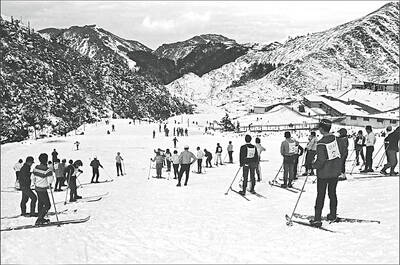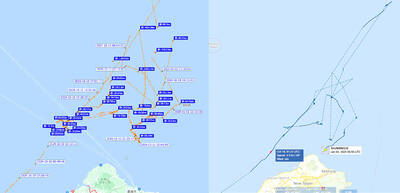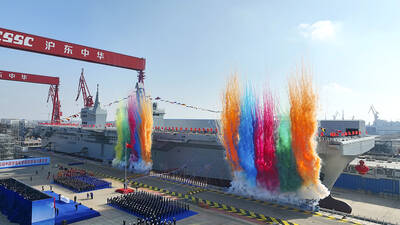The Chinese Nationalist Party (KMT) on Tuesday included the so-called “1992 consensus” into the draft amendments to its policy guidelines.
KMT sources said the draft amendments have been sent to delegates of the party’s national congress for review and commentary. The party plans to forge a consensus and submit a final version for approval at the national congress on July 19, they said.
A team convened by KMT Vice Chairman Hau Lung-bin (郝龍斌) recently completed the draft amendments.
On cross-strait policy, the KMT guidelines originally said that it would push for the realization of the “five-point vision,” including promoting cross-strait economic exchanges, the termination of cross-strait animosity and party-to-party regular communications platforms, reached by former vice president and then-KMT chairman Lien Chan (連戰) and then-Chinese Communist Party general secretary Hu Jintao (胡錦濤) in 2005.
However, the draft amendment on cross-strait releations now includes: “steadfastly abiding by the Republic of China Constitution and cementing the 1992 consensus.”
The “1992 consensus” refers to a supposed tacit understanding reached during cross-strait talks in 1992 that Taiwan and China each acknowledge that there is “one China,” with each side having its own interpretation of what “one China” means.
Former KMT legislator Su Chi (蘇起) in February 2006 said that he made up the term in 2000, when he was head of the Mainland Affairs Council head of the tranfer of power to a Democratic Progressive Party (DPP) administration.
The DPP rejects the existence of the “1992 consensus.”
Normally, the KMT revises its party guidelines every four years.
However, the party began to revise the guidelines after New Taipei City Mayor Eric Chu (朱立倫) took over as KMT chairman in January, and launched an effort to reform the party ahead of next year’s presidential and legislative elections, which are scheduled for January.

A strong continental cold air mass and abundant moisture bringing snow to mountains 3,000m and higher over the past few days are a reminder that more than 60 years ago Taiwan had an outdoor ski resort that gradually disappeared in part due to climate change. On Oct. 24, 2021, the National Development Council posted a series of photographs on Facebook recounting the days when Taiwan had a ski resort on Hehuanshan (合歡山) in Nantou County. More than 60 years ago, when developing a branch of the Central Cross-Island Highway, the government discovered that Hehuanshan, with an elevation of more than 3,100m,

Taiwan’s population last year shrank further and births continued to decline to a yearly low, the Ministry of the Interior announced today. The ministry published the 2024 population demographics statistics, highlighting record lows in births and bringing attention to Taiwan’s aging population. The nation’s population last year stood at 23,400,220, a decrease of 20,222 individuals compared to 2023. Last year, there were 134,856 births, representing a crude birth rate of 5.76 per 1,000 people, a slight decline from 2023’s 135,571 births and 5.81 crude birth rate. This decrease of 715 births resulted in a new record low per the ministry’s data. Since 2016, which saw

SECURITY: To protect the nation’s Internet cables, the navy should use buoys marking waters within 50m of them as a restricted zone, a former navy squadron commander said A Chinese cargo ship repeatedly intruded into Taiwan’s contiguous and sovereign waters for three months before allegedly damaging an undersea Internet cable off Kaohsiung, a Liberty Times (sister paper of the Taipei Times) investigation revealed. Using publicly available information, the Liberty Times was able to reconstruct the Shunxing-39’s movements near Taiwan since Double Ten National Day last year. Taiwanese officials did not respond to the freighter’s intrusions until Friday last week, when the ship, registered in Cameroon and Tanzania, turned off its automatic identification system shortly before damage was inflicted to a key cable linking Taiwan to the rest of

China’s newest Type-076 amphibious assault ship has two strengths and weaknesses, wrote a Taiwanese defense expert, adding that further observations of its capabilities are warranted. Jiang Hsin-biao (江炘杓), an assistant researcher at the National Defense and Security Research, made the comments in a report recently published by the institute about the Chinese Communist Party’s (CCP) military and political development. China christened its new assault ship Sichuan in a ceremony on Dec. 27 last year at Shanghai’s Hudong Shipyard, China’s Xinhua news agency reported. “The vessel, described as the world’s largest amphibious assault ship by the [US think tank] Center for Strategic and International